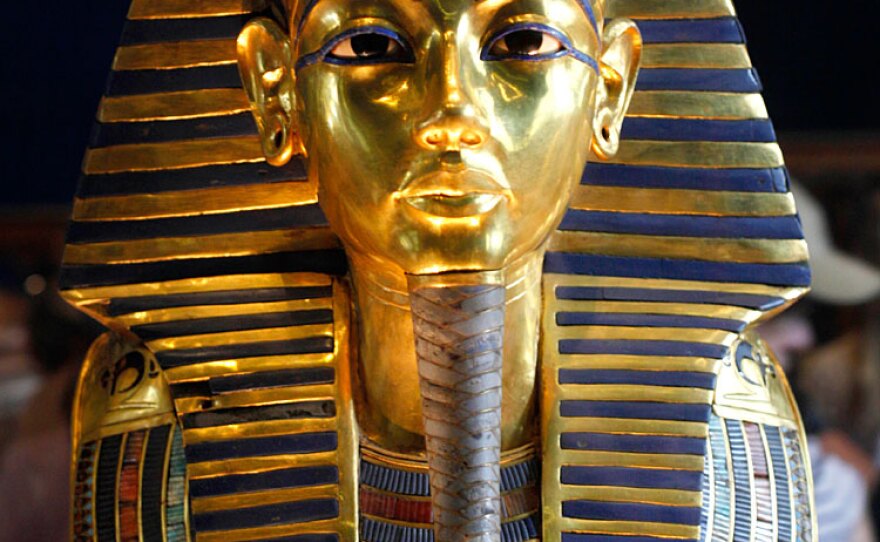King Tutankhamen, known as Egypt's boy pharaoh, probably spent much of his life in pain before dying at 19 from the combined effects of malaria and a broken leg, scientists say.
Tut also had a cleft palate and a curved spine, and was probably weakened by inflammation and problems with his immune system, they say.
The conclusions comes from a new study that used molecular genetics and advanced CT scanning to study 11 royal mummies from ancient Egypt. The study was published in the Journal of the American Medical Association.
Ancient Egypt's Famous Boy Pharaoh
King Tut's reign began more than 3,000 years ago when he was 9. It lasted less than a decade.
But the treasures from his tomb have made him a celebrity. Those treasures also have provoked a lot of speculation about his health.
Statues and other depictions of Tut tend to show him as having an oddly shaped head and feminized body, including breasts. His face typically has "very full and swollen lips and this slim nose," says Carsten Pusch, an author of the study from the Institute of Human Genetics at the University of Tubingen, Germany.
For decades, scholars have speculated about whether Tut had syndromes or genetic defects that could account for his appearance.
But the new study found nothing to back up all of the speculation. Tut's skull had a normal shape, and there was no evidence of female characteristics, Pusch says. Tut's odd portrayal by artists was probably just the style of the time, he says.
Severe Physical Ailments, Possibly Caused By Inbreeding
The tests did reveal enough physical problems to challenge the idea that this boy king had an easy life. "This guy was suffering," Pusch says.
The study's biggest surprise involves Tut's left foot, Pusch says. It was clubbed. And some bones in the toes were dying from a degenerative disease. That would explain why Tut's tomb contained more than 100 canes or walking sticks, Pusch says.
The degenerative bone disease probably caused Tut's foot to swell from inflammation and made it impossible for him to walk normally, Pusch says.
Many of Tut's problems could have come from inbreeding, which was common in the royal family.
Genetic tests using DNA from mummified bones found that Tut's probable father, Akhenaten, married a sister, Pusch says. And the tests suggest that Tut's wife was either his sister or his half-sister. The union produced two pregnancies, but neither fetus survived.
The Likely Causes Of Tut's Death Finally Revealed
The problems related to inbreeding probably contributed to Tut's death but were not the immediate cause, Pusch says. Earlier studies had found that Tut had a badly broken right leg, which could have been a factor.
"He also had a raging case of malaria," says Howard Markel, who wrote an editorial about the new study and is the George E. Wantz professor of the history of medicine at the University of Michigan. The new study found DNA in Tut's bones from the parasite responsible for the most severe form of malaria.
It's likely, though not certain, that the combination of a broken bone, malaria and underlying health problems is what killed King Tut, Markel says.
The high-tech effort to diagnose Tut goes well beyond most previous efforts to study the health problems of historical figures, Markel says.
Many of those efforts relied on documents or pictures, he says. But this international team of investigators was able to put the royal mummies through "a whole battery of modern medical tests that we generally reserve for living patients," Markel says
The approach promises to change the way scholars attempt to diagnose people who lived hundreds or thousands of years ago, Markel says. But he adds that it also raises questions about when it's appropriate to dig up a famous person and examine him or her.
"We tend to have a very good tradition of respecting the dead," Markel says. "If we are going to exhume people and put them through long series of medical examinations, we need to think very carefully about what we are doing."
Copyright 2022 NPR. To see more, visit https://www.npr.org. 9(MDAzMjM2NDYzMDEyMzc1Njk5NjAxNzY3OQ001))







